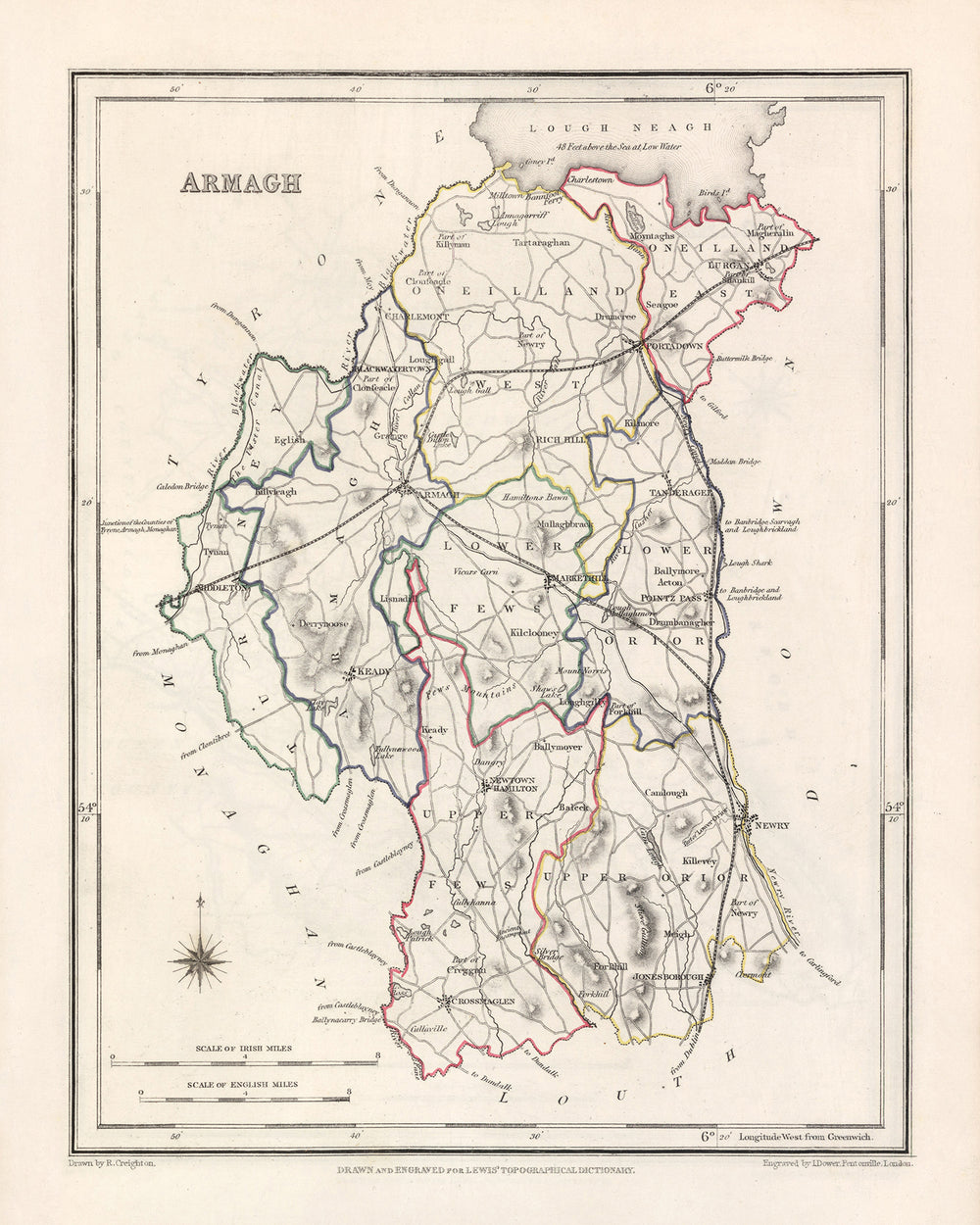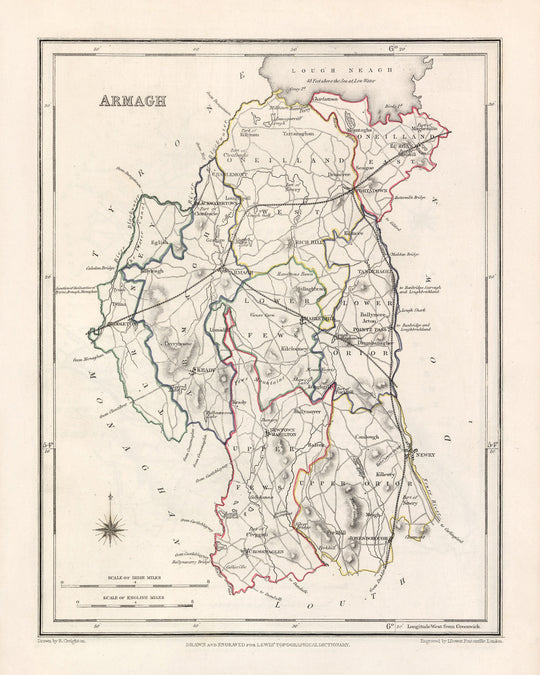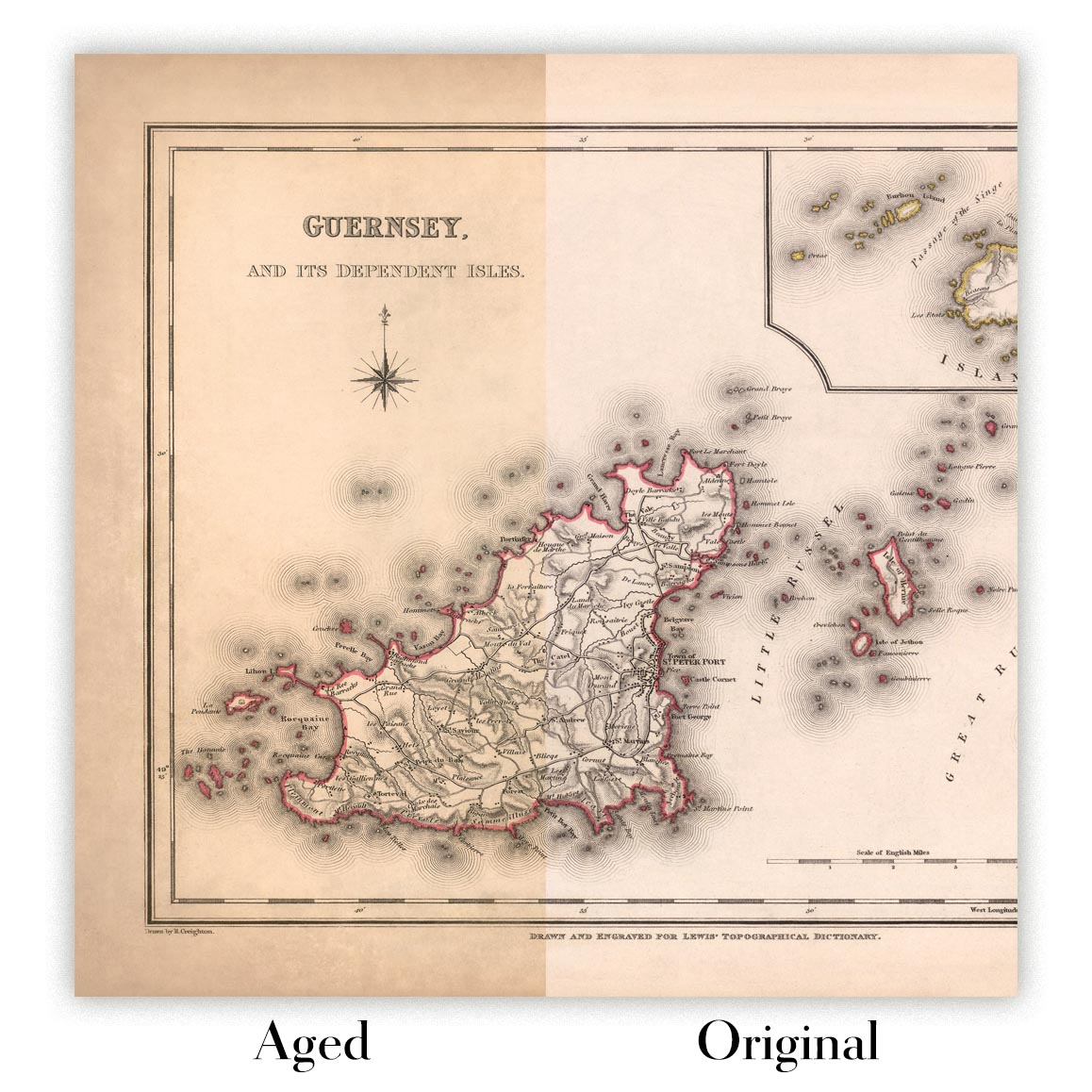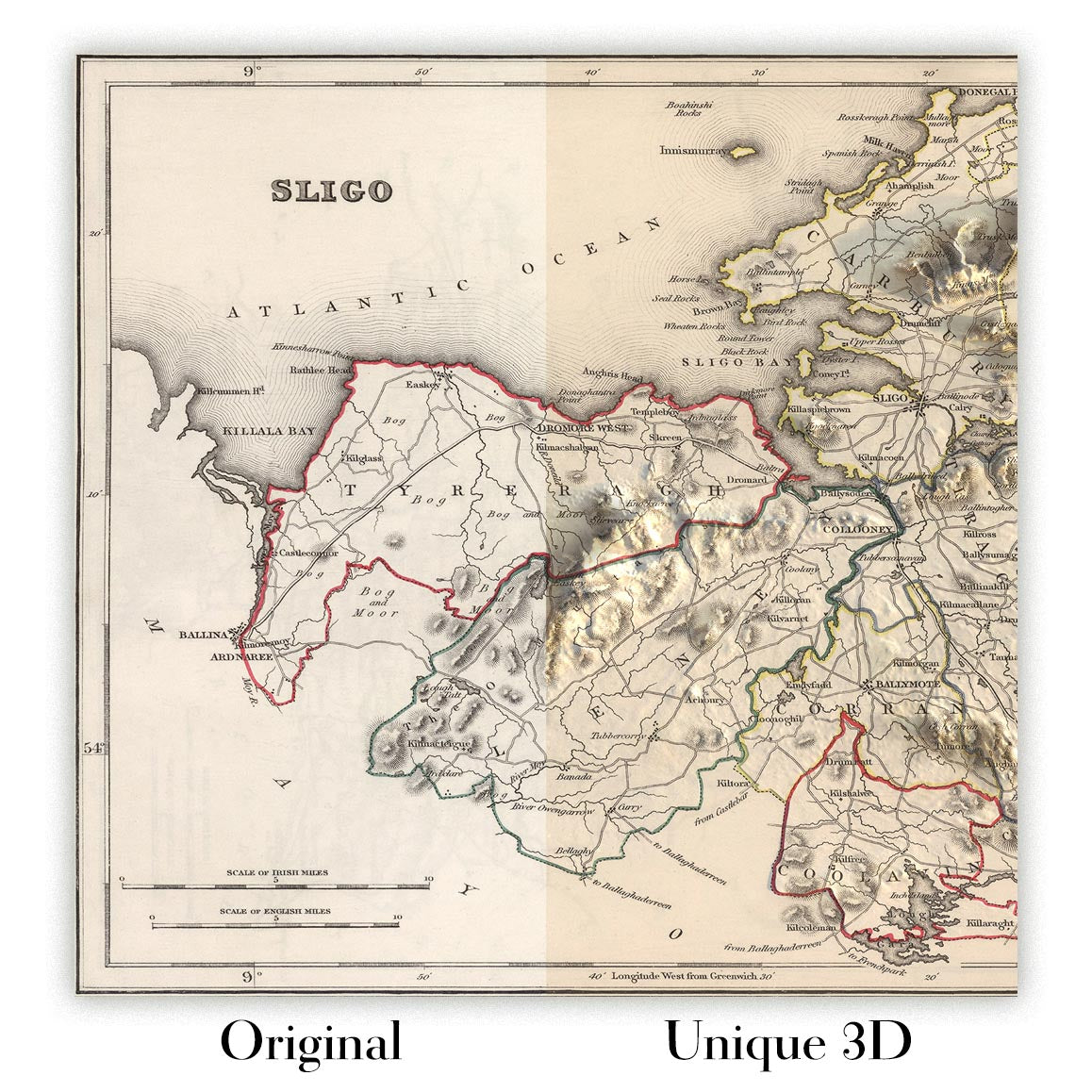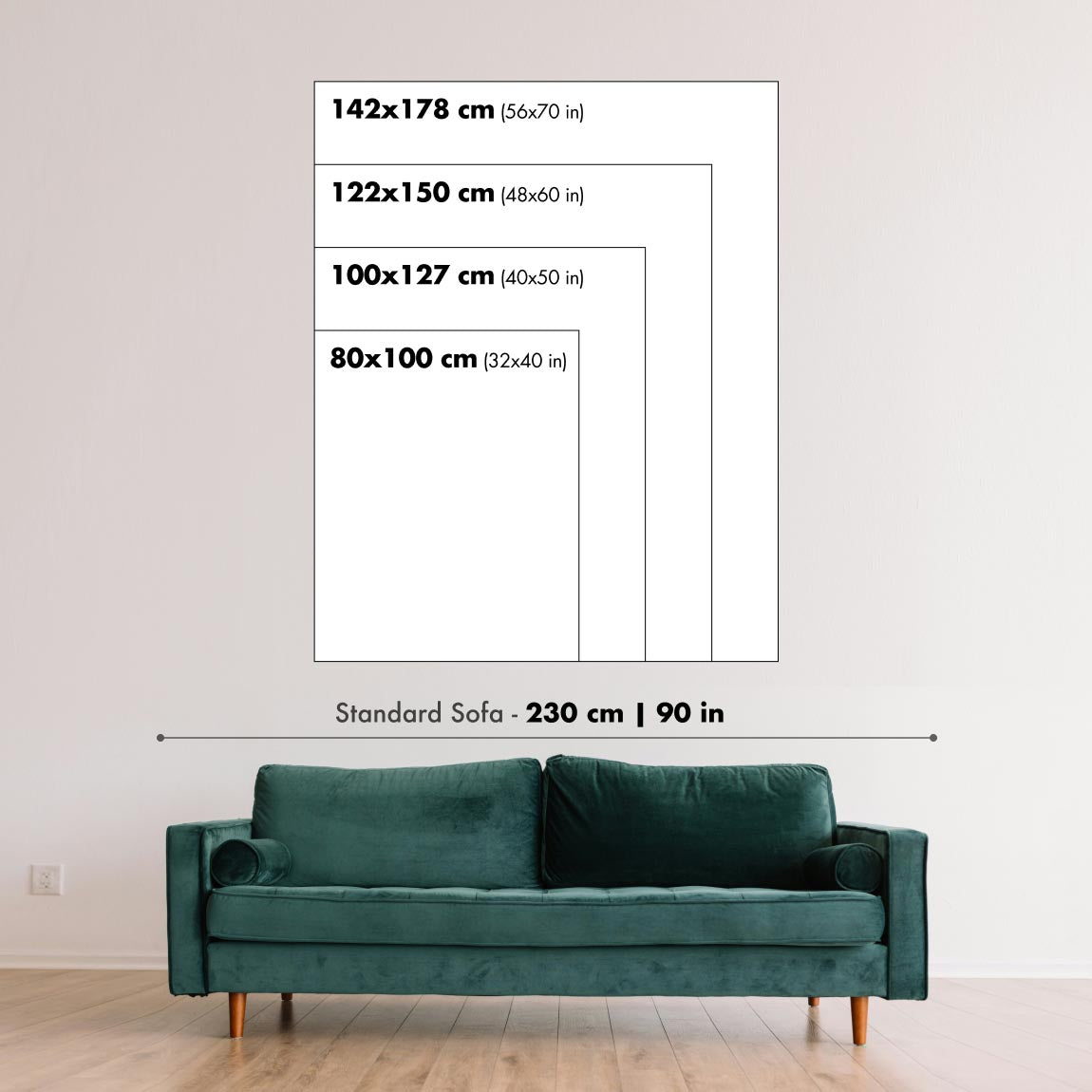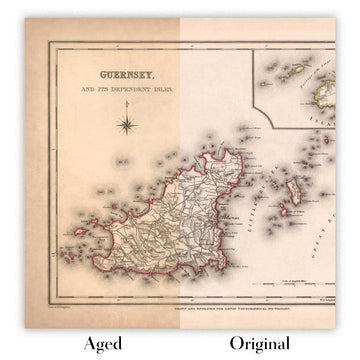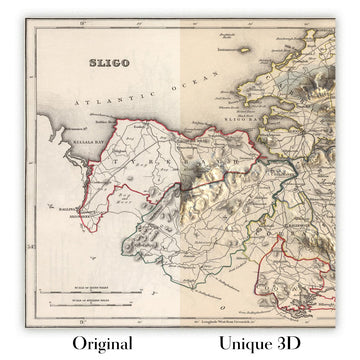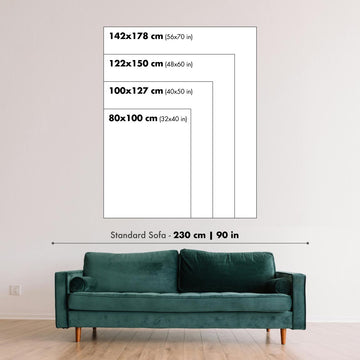- Handmade locally. No import duty or tax
- FREE Delivery by Christmas
- Love it or your money back (90 days)
- Questions? WhatsApp me any time
Own a piece of history
5,000+ 5 star reviews


The Old Map of Armagh by Samuel Lewis, created in 1844, is a captivating and historically significant piece that offers a glimpse into the past. This meticulously crafted map showcases the county's rich heritage, featuring intricate details of its towns, cities, and notable landmarks. Owning this map is like holding a piece of history in your hands, allowing you to explore the region's fascinating past.
This map provides a unique perspective on County Armagh, capturing the essence of the time period in which it was created. It is important to note that some modern cities may not be present on this map, while others may be listed under earlier names, adding an exciting element of discovery. The Old Map of Armagh offers an opportunity to trace the evolution of the county's geography and gain insights into its historical development.
Notable Settlements Founded Before 1840- Armagh (founded in 445): The county town of Armagh, known for its rich ecclesiastical history and the impressive St. Patrick's Cathedral.- Lurgan (founded in 1610): A bustling market town with a vibrant textile industry and a history deeply intertwined with the linen trade.- Portadown (founded in 1664): A thriving town renowned for its industrial heritage, particularly in the production of textiles and engineering.- Markethill (founded in 1664): A charming market town that has been a hub for trade and commerce throughout its history.- Keady (founded in 1700): A picturesque village with a strong agricultural tradition, surrounded by beautiful countryside.- Tandragee (founded in 1611): Home to the historic Tandragee Castle and renowned for its apple orchards and cider production.
The following settlements were also founded before 1840 and are of historical significance within the boundaries of County Armagh:
- Newry (founded in 1144): A vibrant city situated near the border with Northern Ireland, known for its rich maritime history and beautiful canal.
- Craigavon (founded in 1965): A planned settlement that emerged in the mid-20th century, named after Northern Ireland's first Prime Minister, James Craig.
- Richhill (founded in 1600): A picturesque village with a strong agricultural heritage, surrounded by rolling hills and lush greenery.
- Tassagh (founded in 1610): A small village with a rich history and a tranquil atmosphere, nestled amidst the scenic Armagh countryside.
The list continues with:- Tynan (founded in 1610)- Middletown (founded in 1610)- Caledon (founded in 1666)- Hamiltonsbawn (founded in 1610)- Killylea (founded in 1610)- Milford (founded in 1610)- Darkley (founded in 1610)- Mountnorris (founded in 1610)- Laurelvale (founded in 1610)- Killylea (founded in 1610)- Poyntzpass (founded in 1610)- Ballymacnab (founded in 1610)- Madden (founded in 1610)- Mullaghbawn (founded in 1610)- Crossmaglen (founded in 1610)- Belleeks (founded in 1610)- Whitecross (founded in 1610)- Newtownhamilton (founded in 1610)- Camlough (founded in 1610)- Cullyhanna (founded in 1610)- Silverbridge (founded in 1610)- Derrynoose (founded in 1610)- Loughgall (founded in 1610)- Benburb (founded in 1610)
Notable Boundaries, Rivers, and Natural Phenomena- River Bann: Flowing through the county, the River Bann is a significant waterway in Northern Ireland, offering scenic beauty and recreational opportunities.- Slieve Gullion: A prominent mountain in County Armagh, Slieve Gullion is steeped in mythology and boasts stunning panoramic views from its summit.- Ring of Gullion: An Area of Outstanding Natural Beauty, the Ring of Gullion is a captivating landscape filled with ancient sites, forested hills, and picturesque villages.
Historical Events in County Armagh (1800-1850)- 1803 Rebellion: County Armagh witnessed the outbreak of the Irish Rebellion of 1803, led by Robert Emmet, as part of a broader movement against British rule.- Tithe War: The county experienced unrest during the Tithe War of the 1830s, a period of agrarian agitation against the payment of tithes to the Anglican Church.
Owning the Old Map of Armagh by Samuel Lewis, 1844, allows you to delve into the county's captivating history, explore its notable settlements, and appreciate the natural beauty that has shaped the region.
Please double check the images to make sure that a specific town or place is shown on this map. You can also get in touch and ask us to check the map for you.
This map looks great at all sizes: 12x16in (30.5x41cm), 16x20in (40.5x51cm), 18x24in (45.5x61cm), 24x30in (61x76cm), 32x40in (81.5x102cm) and 40x50in (102x127cm), but it looks even better when printed large.
I can create beautiful, large prints of this map up to 50in (127cm). Please get in touch if you're looking for larger, customised or different framing options.
The model in the listing images is holding the 16x20in (40.5x51cm) version of this map.
The fifth listing image shows an example of my map personalisation service.
If you’re looking for something slightly different, check out my main collection of UK and Ireland maps.
Please contact me to check if a certain location, landmark or feature is shown on this map.
This would make a wonderful birthday, Christmas, Father's Day, work leaving, anniversary or housewarming gift for someone from the areas covered by this map.
This map is available as a giclée print on acid free archival matte paper, or you can buy it framed. The frame is a nice, simple black frame that suits most aesthetics. Please get in touch if you'd like a different frame colour or material. My frames are glazed with super-clear museum-grade acrylic (perspex/acrylite), which is significantly less reflective than glass, safer, and will always arrive in perfect condition.
This map is also available as a float framed canvas, sometimes known as a shadow gap framed canvas or canvas floater. The map is printed on artist's cotton canvas and then stretched over a handmade box frame. We then "float" the canvas inside a wooden frame, which is available in a range of colours (black, dark brown, oak, antique gold and white). This is a wonderful way to present a map without glazing in front. See some examples of float framed canvas maps and explore the differences between my different finishes.
For something truly unique, this map is also available in "Unique 3D", our trademarked process that dramatically transforms the map so that it has a wonderful sense of depth. We combine the original map with detailed topography and elevation data, so that mountains and the terrain really "pop". For more info and examples of 3D maps, check my Unique 3D page.
For most orders, delivery time is about 3 working days. Personalised and customised products take longer, as I have to do the personalisation and send it to you for approval, which usually takes 1 or 2 days.
Please note that very large framed orders usually take longer to make and deliver.
If you need your order to arrive by a certain date, please contact me before you order so that we can find the best way of making sure you get your order in time.
I print and frame maps and artwork in 23 countries around the world. This means your order will be made locally, which cuts down on delivery time and ensures that it won't be damaged during delivery. You'll never pay customs or import duty, and we'll put less CO2 into the air.
All of my maps and art prints are well packaged and sent in a rugged tube if unframed, or surrounded by foam if framed.
I try to send out all orders within 1 or 2 days of receiving your order, though some products (like face masks, mugs and tote bags) can take longer to make.
If you select Express Delivery at checkout your order we will prioritise your order and send it out by 1-day courier (Fedex, DHL, UPS, Parcelforce).
Next Day delivery is also available in some countries (US, UK, Singapore, UAE) but please try to order early in the day so that we can get it sent out on time.
My standard frame is a gallery style black ash hardwood frame. It is simple and quite modern looking. My standard frame is around 20mm (0.8in) wide.
I use super-clear acrylic (perspex/acrylite) for the frame glass. It's lighter and safer than glass - and it looks better, as the reflectivity is lower.
Six standard frame colours are available for free (black, dark brown, dark grey, oak, white and antique gold). Custom framing and mounting/matting is available if you're looking for something else.
Most maps, art and illustrations are also available as a framed canvas. We use matte (not shiny) cotton canvas, stretch it over a sustainably sourced box wood frame, and then 'float' the piece within a wood frame. The end result is quite beautiful, and there's no glazing to get in the way.
All frames are provided "ready to hang", with either a string or brackets on the back. Very large frames will have heavy duty hanging plates and/or a mounting baton. If you have any questions, please get in touch.
See some examples of my framed maps and framed canvas maps.
Alternatively, I can also supply old maps and artwork on canvas, foam board, cotton rag and other materials.
If you want to frame your map or artwork yourself, please read my size guide first.
My maps are extremely high quality reproductions of original maps.
I source original, rare maps from libraries, auction houses and private collections around the world, restore them at my London workshop, and then use specialist giclée inks and printers to create beautiful maps that look even better than the original.
My maps are printed on acid-free archival matte (not glossy) paper that feels very high quality and almost like card. In technical terms the paper weight/thickness is 10mil/200gsm. It's perfect for framing.
I print with Epson ultrachrome giclée UV fade resistant pigment inks - some of the best inks you can find.
I can also make maps on canvas, cotton rag and other exotic materials.
Learn more about The Unique Maps Co.
Map personalisation
If you're looking for the perfect anniversary or housewarming gift, I can personalise your map to make it truly unique. For example, I can add a short message, or highlight an important location, or add your family's coat of arms.
The options are almost infinite. Please see my map personalisation page for some wonderful examples of what's possible.
To order a personalised map, select "personalise your map" before adding it to your basket.
Get in touch if you're looking for more complex customisations and personalisations.
Map ageing
I have been asked hundreds of times over the years by customers if they could buy a map that looks even older.
Well, now you can, by selecting Aged before you add a map to your basket.
All the product photos you see on this page show the map in its Original form. This is what the map looks like today.
If you select Aged, I will age your map by hand, using a special and unique process developed through years of studying old maps, talking to researchers to understand the chemistry of aging paper, and of course... lots of practice!
If you're unsure, stick to the Original colour of the map. If you want something a bit darker and older looking, go for Aged.
If you are not happy with your order for any reason, contact me and I'll get it fixed ASAP, free of charge. Please see my returns and refund policy for more information.
I am very confident you will like your restored map or art print. I have been doing this since 1984. I'm a 5-star Etsy seller. I have sold tens of thousands of maps and art prints and have over 5,000 real 5-star reviews. My work has been featured in interior design magazines, on the BBC, and on the walls of dozens of 5-star hotels.
I use a unique process to restore maps and artwork that is massively time consuming and labour intensive. Hunting down the original maps and illustrations can take months. I use state of the art and eye-wateringly expensive technology to scan and restore them. As a result, I guarantee my maps and art prints are a cut above the rest. I stand by my products and will always make sure you're 100% happy with what you receive.
Almost all of my maps and art prints look amazing at large sizes (200cm, 6.5ft+) and I can frame and deliver them to you as well, via special oversized courier. Contact me to discuss your specific needs.
Or try searching for something!









